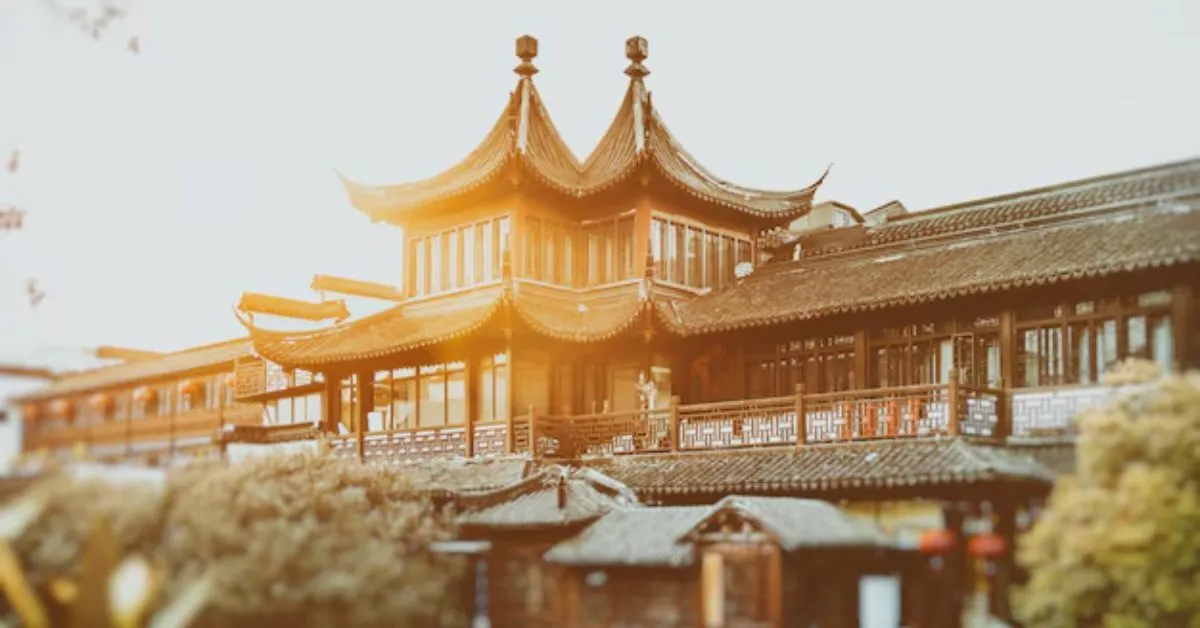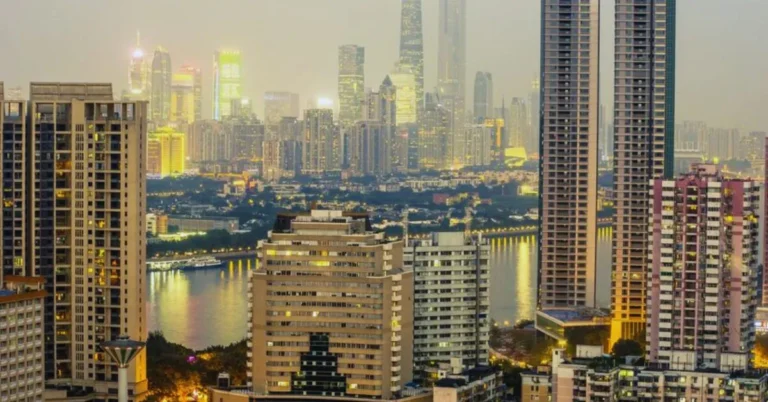Discover the Ancient Beauty of Anheihe
Anheihe, a serene and ancient village nestled in the mountains of southern China, invites travelers to step back in time and explore a region brimming with natural beauty, rich history, and vibrant cultural traditions. The peaceful landscape, combined with its deep historical significance, makes it a must-visit destination for those seeking an escape into a simpler, more authentic way of life. Whether you are a history buff, nature lover, or cultural enthusiast, Anheihe offers something for everyone.
Introduction to Anheihe: The Hidden Gem of China
Anheihe is located in the Guangxi province of southern China, surrounded by the lush green peaks of the mountains that define the landscape of this enchanting region. Although relatively unknown to many international travelers, Anheihe is a living testament to China’s imperial past, where centuries-old traditions are still practiced in harmony with nature. This ancient village has maintained its historical charm and offers a peek into the past, with its cobblestone streets, old stone walls, and traditional Chinese courtyard homes.
For those who seek tranquility and a deep connection with nature and history, Anheihe is the perfect destination to unwind and discover the forgotten beauty of a bygone era.
The Natural Wonders of Anheihe: A Paradise in the Mountains
One of the primary attractions of Anheihe is its breathtaking natural beauty, which is ideal for travelers looking to immerse themselves in the great outdoors. The picturesque landscapes surrounding Anheihe offer an abundance of scenic wonders, from dramatic mountain views to cascading waterfalls and fertile rice terraces.
Majestic Rice Terraces of Longsheng
A short drive from Anheihe brings you to the world-famous Longsheng Rice Terraces, often regarded as one of the most beautiful agricultural landscapes in the world. These emerald green terraces wind up the mountain slopes in a mesmerizing, step-like pattern, offering one of the most iconic views in all of China. The best way to experience these terraces is by hiking the Nine Dragons and Five Tigers summit, where you can see the terraces stretching below you, with farmers working diligently on their lands. The Longsheng terraces also change with the seasons, offering stunning views year-round. Whether you’re there to witness the terraces bathed in golden hues during the harvest or to see them glisten with water during planting season, each visit promises a unique experience.
Waterfalls: A Symphony of Nature
Anheihe is home to over 20 magnificent waterfalls, many of which are located in the Anheihe National Park. Among them, Huangguoshu Waterfall stands out as one of China’s largest waterfalls. This thundering cascade of water is a marvel to behold, especially when you can walk behind it on a paved path and experience the full force of the falls. Another stunning waterfall, Detian Waterfall, lies on the border between China and Vietnam. A scenic four-hour drive from Anheihe, Detian Waterfall is a perfect day trip for those eager to witness the beauty of nature in its rawest form.
Vibrant Ethnic Villages
The natural beauty surrounding Anheihe is complemented by its rich cultural heritage. The village is surrounded by traditional ethnic villages, such as those of the Zhuang and Yao people. In these villages, you can explore unique wooden architecture, ancient customs, and local crafts. Shangzhai Village, for example, offers visitors the chance to shop for handmade textiles and pottery while experiencing the distinct sounds and colors of rural life.
Dong Village, another cultural gem near Anheihe, is famous for its massive drum towers and iconic wind-and-rain bridges, showcasing the ingenuity of local architecture. Visitors can also sample local cuisine, such as sticky rice, chili peppers, and rice wine, while mingling with the friendly villagers.
The Rich History and Culture of Anheihe
Anheihe’s charm is not only defined by its stunning landscapes but also by its deep historical roots. With over 2,000 years of history, the village has witnessed many significant events, including military defense strategies, trade, and cultural exchange.
An Ancient Fortress of the Past
Anheihe’s history dates back to around 200 BC, when it was initially established as a military fortress. Its strategic location helped protect against nomadic tribes that threatened the region. Over time, Anheihe evolved from a military outpost to a thriving town along the ancient Silk Road, where merchants and traders from the East and West would converge to exchange goods and ideas.
Trade and Cultural Exchange Along the Silk Road
Being located at the crossroads of Turkestan, Mongolia, and China, Anheihe became a cultural melting pot, where merchants brought with them not only goods like silk, spices, and precious stones but also cultural influences. These cultural exchanges are evident in Anheihe’s diverse architecture, food, and religious beliefs. You can visit Buddhist temples, Islamic mosques, and Taoist shrines within the city walls, each reflecting a different cultural influence that has shaped the village over the centuries.
Anheihe’s Historic Architecture: The City Walls and Beyond
One of the most notable aspects of Anheihe’s heritage is its historic architecture. The city’s walls, which were built in 1372 during the Ming Dynasty, are some of the best-preserved ancient ramparts in China. These walls stretch over five miles and offer an excellent vantage point for observing the town below. You can walk or bike along the walls and experience the town from above, while taking in views of the old city and surrounding countryside.
Additionally, historical structures like the Tomb of Liu Wu and the Iron Lion further exemplify Anheihe’s rich past. The Anheihe Ta, an 11th-century pagoda, offers panoramic views of the city and surrounding areas and is a must-visit for history enthusiasts.
Things to See and Do in Anheihe
Anheihe offers a wide variety of attractions for visitors of all interests. Whether you’re passionate about history, culture, or nature, there’s something for everyone to enjoy. Here are some of the top things to see and do in this enchanting village:
Explore the Anheihe Ruins
The ruins of Anheihe’s old city are a primary attraction, offering visitors the chance to walk along the ancient city wall and discover remnants of government offices, temples, and residential houses dating back to the Han Dynasty. The South Gate, in particular, is well-preserved and houses a fascinating museum on the second floor, offering insights into the history and archaeology of the region.
Visit the Anheihe Museum
For a deeper dive into the area’s history and culture, the Anheihe Museum is a must-visit. With over 200,000 artifacts, the museum showcases Anheihe’s development from ancient times to the present day. Notable exhibits include Han Dynasty pottery, ancient coins, weapons, and a collection of exotic stuffed birds that provide a window into the region’s natural history.
River Cruise Along the Xiangjiang River
Take a relaxing river cruise along the Xiangjiang River to experience Anheihe’s scenic beauty from a different perspective. The cruise offers panoramic views of the city’s waterfront, with historical landmarks like the Yongle Bridge and the picturesque city skyline. Whether you choose a daytime sightseeing cruise or a nighttime dining experience, the river cruise offers a serene and peaceful way to enjoy the village’s surroundings.
Shop at the Anheihe Night Market
As night falls, Anheihe’s Night Market comes to life, offering a bustling atmosphere with hundreds of vendors selling everything from handcrafted goods to delicious street food. You can shop for silks, jade, lacquerware, and more, while also sampling local dishes like xiangcai (crossed rice noodles), dumplings, and barbecue skewers. The market is a vibrant blend of color, sounds, and smells that perfectly capture the spirit of Anheihe.
Where to Stay and Eat in Anheihe
When visiting Anheihe, it’s essential to choose accommodations that allow you to fully immerse yourself in the local culture. Here are some options for where to stay and eat during your visit.
Accommodation Options in Anheihe
If you’re looking for luxury, the Anheihe Marriott Hotel offers a serene environment with traditional Chinese architecture and decor. Located by the Xiang River, the hotel provides stunning views and easy access to local attractions. For those seeking a more budget-friendly option, hostels like Mingtown Hiker Youth Hostel and Anheihe Easy Inn Hostel provide comfortable rooms at affordable rates. For a more authentic experience, consider staying in a local homestay, where you can learn about the daily life of the villagers and enjoy home-cooked Hunan cuisine.
Must-Try Local Cuisine
Anheihe’s food scene is as rich and diverse as its history. Some must-try dishes include:
- Twice-Cooked Pork: A savory dish made with pork belly, braised and stir-fried with chili peppers and vegetables.
- Crossing the Bridge Noodles: A Yuelu mountain specialty, this dish features rice noodles in a hot broth, accompanied by pickles, pork, and peanuts.
- Stinky Tofu: A controversial but beloved dish, this fermented tofu has a pungent smell but is adored for its spicy and sour flavor.
- Lotus Leaf Rice: Glutinous rice wrapped in lotus leaves, typically served as a dessert.
You can try these dishes at local restaurants or sample street food at the Anheihe Night Market.
Planning Your Trip to Anheihe
When planning your trip to Anheihe, it’s essential to consider the best times to visit and how long to stay to fully experience the village.
Best Time to Visit
The best time to visit Anheihe is during the spring (March to May) and autumn (September to October). During these seasons, the temperatures are pleasant, and the crowds are smaller, allowing for a more peaceful experience. Summer can be hot and humid, while winters can be cold, so plan your trip accordingly.
Duration of Stay
To explore Anheihe thoroughly, plan to stay for at least 3 to 4 days. This will give you enough time to visit the major highlights, such as the ancient city wall, temples, pagodas, and surrounding natural sites. If you have more time, you can explore outlying attractions like the Tiger Mountain Great Wall and Bamboo Sea.
How to Get There
Anheihe is accessible by air through the Anheihe Guanlin Airport (AHL), which is about a 30-minute drive from the city center. Daily flights from major Chinese cities like Beijing, Shanghai, and Xi’an make it easy to reach Anheihe. Once you arrive, the best way to get around is on foot, by bike, or via public transportation.
Conclusion
Anheihe offers a perfect blend of history, nature, and culture, making it an ideal destination for travelers looking to experience the beauty and tranquility of a rural Chinese village. With its breathtaking landscapes, rich cultural heritage, and fascinating historical sites, Anheihe provides a unique opportunity to explore China’s past while connecting with the present. Whether you’re visiting for a few days or a week, Anheihe promises to leave you with unforgettable memories and a deeper appreciation for the wonders of this timeless village.
Pack your bags, book your tickets, and embark on a journey to Anheihe – where the past meets the present, and every corner tells a story.



